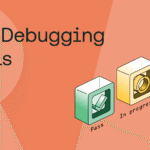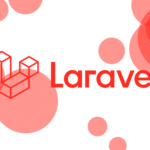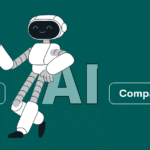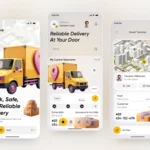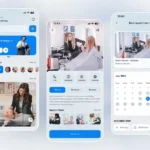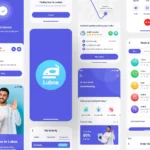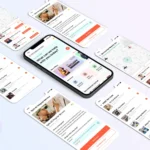Introduction
On-demand delivery apps have transformed how people access food, groceries, medicines, and daily essentials. Users now expect fast delivery, real-time tracking, secure payments, and verified drivers with every order. Brands rely on these apps to reach customers quickly without investing in physical operations.
This guide explains how to build a reliable, scalable, and profitable on-demand delivery app backed by research and proven industry practices.
You will learn:
Market insights: Growth drivers in food, grocery, and last-mile delivery.
How delivery apps work: From order placement to allocation and fulfillment.
Business models: Aggregator, cloud-first, marketplace, and hyperlocal formats.
Core features: User app, driver app, and admin system essentials.
Technology stack: Recommended frameworks for long-term stability.
Development process: A step-by-step plan from MVP to launch.
Cost breakdown: Verified benchmarks across different regions.
Revenue models: Commission, subscriptions, ads, surge pricing, and partnerships.
AI use cases: Route optimization, smart assignment, and demand prediction.
Logistics management: Last-mile strategies and delivery efficiency.
Challenges: Operational, technical, and compliance issues with practical solutions.
Case studies: Lessons from global leaders in the delivery ecosystem.
If you are a startup founder, delivery brand, or development agency, this verified playbook provides everything you need to build an on-demand delivery app that is fast, efficient, and ready for scale.
Understanding the On-Demand Delivery Market
The on-demand delivery industry has become one of the fastest-growing digital sectors as consumers depend on apps for food, groceries, medicines, and everyday products. Speed, convenience, and real-time tracking now shape user expectations in almost every region.
Why the On-Demand Delivery Market Keeps Growing
Smartphone and mobile internet usage makes app-based ordering the default choice.
Urban lifestyles and busy schedules increase the need for fast delivery.
Better logistics, route optimization, and tracking reduce delivery time.
Businesses prefer delivery apps because they lower operational costs and extend reach.
Market Size and Verified Growth Data
According to the Online Food Delivery Market report by Allied Market Research, the global online food delivery market was valued at 343.7 billion USD in 2022 and is projected to reach 1.3 trillion USD by 2032, at a CAGR of 14.3 percent from 2023 to 2032.
The Global Online Food Delivery Market Outlook from Grand View Research states that the global online food delivery market generated around 288.8 billion USD in 2024 and is expected to reach 505.5 billion USD by 2030, growing at a CAGR of 9.4 percent from 2025 to 2030.
Verified by ReadAuthentic Research, this growth is driven by three consistent factors across markets: convenience, time savings, and trust in app-based ordering.
Key Demand Drivers in Delivery Apps
Demand for contactless and quick delivery in urban and semi-urban areas.
Growth of cloud kitchens and dark stores built only for delivery.
Real-time order tracking and accurate ETAs that increase trust.
Subscription and membership models that encourage repeat orders.
Expansion of hyperlocal delivery for medicine, pet supplies, and daily essentials.
Why This Market Is Attractive for Founders
Strong repeat usage and high order frequency in food and grocery.
Clear, proven business models that new players can adopt and refine.
Partnership opportunities with restaurants, grocery chains, pharmacies, and retailers.
High scalability when supported by automated dispatching and optimized logistics.
The on-demand delivery market keeps growing because it solves a universal problem for users: getting what they need, where they are, without wasting time traveling or waiting in queues.
How On-Demand Delivery Apps Work
On-demand delivery apps follow a structured workflow that connects users, merchants, drivers, and the admin system in real time. A smooth delivery lifecycle depends on efficient communication, automated assignment, precise location tracking, and fast payment processing.
1. The Complete Delivery Lifecycle
The entire delivery flow can be broken into five core stages.
Stage 1: User Places an Order
The user selects products or services from restaurants, stores, or local vendors.
The app checks availability, delivery location, and estimated delivery time.
Users choose a payment method and confirm the order.
A reliable UX at this stage increases order completion, especially in categories like food and groceries where users act quickly.
Stage 2: Merchant Receives and Confirms the Order
Merchants receive order details in their dashboard or partner app.
They confirm item availability and start preparing the order.
The system updates the user about preparation or packing progress.
Accurate communication between merchants and the app prevents cancellations and delays.
Stage 3: Delivery Partner Assignment
Once the order is ready, the system assigns the nearest available driver.
Smart algorithms measure distance, traffic, driver ratings, and availability.
Drivers accept or decline requests within a time window.
According to the On-Demand Delivery Optimization Report by Databricks automated assignment significantly improves delivery success rates by using real-time data to match orders efficiently.
Stage 4: Pickup, Routing, and Real-Time Tracking
The driver arrives at the merchant location for pickup.
The navigation system provides optimized routes based on traffic and distance.
Users can track the order in real time through GPS updates.
Live tracking is one of the strongest trust-building factors and directly improves user satisfaction.
Stage 5: Delivery Completion and Secure Payment
The driver delivers the order to the user and confirms completion.
Users rate the merchant and driver to improve future recommendations.
Payments are processed securely, and commissions are automatically split.
Post-delivery ratings influence future driver assignment and merchant visibility, making reviews crucial for platform quality.
2. Key Components That Make This Flow Work
User App: Ordering, search, tracking, payments, notifications.
Merchant App: Order management, preparation updates, menu or product control.
Driver App: Job acceptance, navigation, delivery status updates.
Admin Panel: Platform monitoring, payouts, dispute resolution, analytics.
Each component must work in sync to maintain a reliable delivery ecosystem.
3. Why This Workflow Matters
It keeps order time predictable.
It ensures fair and efficient assignment for drivers.
It reduces manual errors for merchants.
It increases user trust through transparency.
This step-by-step structure represents the foundation of every major delivery platform, regardless of category or region.
Business Models for Delivery Apps
Choosing the right business model determines how your delivery platform earns money, manages operations, and scales. Most successful on-demand delivery apps use one of the following models or a combination of them.
Aggregator Model
The app connects users to multiple restaurants, stores, or vendors. Delivery is handled by platform drivers.
How it works:
Merchants upload menus or products.
Users place orders through the app.
Drivers handle pickup and delivery.
The platform earns commissions per order.
Best For: Food, grocery, medicine, and other high-frequency categories.
Marketplace Model
The platform lists vendors, but delivery is handled by the merchants themselves.
How it works:
Merchants receive orders directly.
Vendors manage their own delivery staff.
The platform earns listing fees, ads, or small commissions.
Best For: Multi-vendor ecosystems and local retail networks.
Full-Stack Delivery Model
The platform manages inventory, fulfillment, dispatch, and delivery. This gives full control over speed and supply chain.
How it works:
The app manages storage, dark stores, and stock.
Delivery partners work for the platform.
Every stage of fulfillment is owned by the platform.
Best For: Quick commerce and ultra-fast delivery services.
Hybrid Model
A flexible mix of aggregator, marketplace, or full-stack approaches depending on category or region.
How it works:
Some orders use merchant-led delivery.
Some orders use platform drivers.
Some categories are fully controlled by the platform.
Best For: Large multi-category delivery apps expanding across cities.
Verified Market Validation
According to the Online Delivery Market Report by
Allied Market Research aggregator and hybrid models consistently generate the highest recurring revenue due to multi-vendor participation and high re-order frequency.
ReadAuthentic Research confirms that hybrid models achieve stronger retention because users have more choices, faster delivery, and a wider product range.
Vertical Comparison Table
Aggregator Model
Ideal For: Food and grocery delivery
Revenue Potential: High
Control Level: Medium
Scalability: Very High
Marketplace Model
Ideal For: Multivendor and local retail platforms
Revenue Potential: Moderate
Control Level: Low
Scalability: High
Full-Stack Delivery Model
Ideal For: Quick commerce, dark-store operations
Revenue Potential: Very High
Control Level: Very High
Scalability: Medium
Hybrid Model
Ideal For: Multi-category and regional expansion
Revenue Potential: Highest
Control Level: Flexible
Scalability: Very High
Choosing the Right Model
Choose Aggregator if you want fast scaling with limited operational setup.
Choose Marketplace if vendors can handle delivery themselves.
Choose Full-Stack if you want maximum control and premium delivery speed.
Choose Hybrid if you want to scale across categories and regions efficiently.
The hybrid model remains the most successful because it balances control, profitability, and flexibility at scale.
Must-Have Features for Users, Drivers, and Admins
A successful delivery app depends on three core panels working together: the user app, the driver app, and the admin dashboard. Each panel must be intuitive, fast, and built for real-time visibility.
User App Features
Users expect convenience, accurate ETAs, and a transparent ordering experience. These features directly impact conversions and repeat orders.
Simple registration and secure login
Location-based product and vendor discovery
Real-time order tracking
Multiple payment options
Estimated delivery time and live updates
Ratings and review system
Delivery instructions section
Order history and quick reorder
Discount codes and promotions
Push notifications for updates and offers
According to the On-Demand Delivery User Experience Study by
NielsenIQ, clear tracking and transparent pricing significantly increase order completion and customer trust.
Driver App Features
Drivers need tools that help them accept orders easily, navigate efficiently, and complete deliveries without confusion.
Secure onboarding and background verification
Availability toggle
Delivery request acceptance and rejection
In-app navigation with map integration
Pickup and drop-off instructions
Earnings dashboard and payout history
Delivery status updates
Real-time support for issues
Performance insights and ratings
Smooth driver workflows reduce delays and improve overall delivery speed.
Admin Panel Features
The admin dashboard acts as the control center for your entire delivery ecosystem. It must handle vendors, customers, orders, drivers, and finances with real-time accuracy.
Central dashboard for monitoring orders
Vendor and driver management
Commission and payout configuration
Order assignment logic and routing controls
Analytics for orders, revenue, and retention
Dispute handling and customer support tools
Promotions, banners, and marketing management
Role-based access control for staff
System alerts and performance monitoring
A strong admin panel reduces manual oversight and increases platform reliability at scale.
Advanced and AI-Driven Features
Modern delivery apps integrate AI and automation to boost efficiency and reduce costs.
Smart assignment based on distance, availability, and traffic
Predictive ETAs using real-time data
AI-powered route optimization
Automated fraud detection
Personalized product suggestions
Chatbots for order updates and customer queries
Dynamic pricing for peak hours
Demand prediction and inventory planning
These features improve operational efficiency and customer satisfaction, especially during high demand.
Why These Features Matter
Users get fast, transparent delivery with minimal friction
Drivers complete tasks efficiently, reducing delays
Admins maintain full visibility and control over platform operations
AI enhancements keep costs low and accuracy high
Strong feature foundations help your delivery platform scale across categories like food, groceries, medicine, pet supplies, and last-mile essentials.
Technology Stack and System Architecture
A delivery app must be fast, reliable, and capable of handling thousands of real-time operations. Choosing the right technology stack ensures better performance, easier maintenance, and long-term scalability.
Frontend Technologies
Your frontend determines the user experience, app responsiveness, and design flexibility. Cross-platform tools help reduce development time without compromising quality.
React Native for fast development and strong community support
Flutter for smooth UI performance and a single codebase
Next.js for web-based admin dashboards and merchant portals
These frameworks remain industry leaders because they deliver consistent performance across devices.
Backend Technologies
The backend manages business logic, authentication, dispatch algorithms, payments, and real-time updates. The goal is stability and speed.
Node.js for high-speed event-driven applications
Laravel for structured API development and security
Django for robust data and compliance-heavy operations
According to the Stack Overflow Developer Survey
Stack Overflow Survey, Node.js and Python rank among the most widely utilized backend technologies for modern scalable apps.
Databases
Delivery apps depend on fast data access, real-time updates, and reliable record management.
PostgreSQL for structured relational data
MongoDB for flexible product and order management
Redis for caching and low-latency operations
A combination of PostgreSQL and Redis is often used for stable performance under heavy traffic.
APIs and Third-Party Integrations
Modern delivery apps rely heavily on third-party APIs to improve functionality and reliability.
Payment: Stripe, Razorpay, PayPal
Location: Google Maps API for navigation and distance
Communication: Twilio or Firebase for SMS and push notifications
Storage: AWS S3 or Cloudinary for images and documents
These integrations reduce development effort and maintain enterprise-level security.
Cloud Infrastructure
Scalable cloud infrastructure is essential for managing peak demand, especially during dinner hours or festival seasons.
AWS for broad service options and auto-scaling
Google Cloud for AI-enhanced analytics
Microsoft Azure for hybrid-cloud or enterprise setups
Cloud providers ensure uptime, load balancing, monitoring, and automated backups.
Recommended System Architecture
A delivery app’s architecture must support real-time tracking, multi-party communication, and automated dispatching. The most effective structure is a layered approach.
System Layers
Presentation Layer
Mobile and web interfaces for users, drivers, and merchants.
Business Logic Layer
Pricing engine, delivery rules, availability, promotional logic.
API Gateway Layer
Handles authentication, routing, load balancing, and microservices.
Data Layer
Databases, caching, and analytics storage.
AI and Automation Layer
Demand prediction, route optimization, dispatcher intelligence.
Why This Stack Works Long Term
Supported by large developer communities
Modular and easy to upgrade
Compatible with microservices and containerization
Scalable for multi-city expansion
Works with future AI and automation tools
A strong tech stack ensures your delivery platform stays fast, reliable, and ready to scale across markets.
Step-by-Step Delivery App Development Process
A delivery app must follow a structured development process to ensure accuracy, fast launch, and long-term scalability. This roadmap helps founders, agencies, and product teams build the app with clarity and minimum risk.
Planning and Requirement Research
Understanding your audience, delivery categories, and target regions is the foundation of a stable product.
Key Tasks
Identify high-demand categories such as food, grocery, medicine, and essentials
Study competitors and their delivery flows
Validate delivery timelines and user expectations
Collect user pain points through surveys or interviews
According to the Startup Failure Analysis by CB Insights
CB Insights, 35 percent of startups fail due to lack of market need, making research essential.
Define Your MVP Scope
Focus on essential features first. Add advanced or AI-driven features only after you validate your core delivery flow.
MVP Must Include:
User registration
Product browsing
Cart and checkout
Real-time tracking
Driver assignment
Secure payments
Basic admin controls
A clear MVP prevents overspending and accelerates time-to-market.
UI and UX Design
Your design must be smooth, simple, and optimized for fast conversions.
Design Priorities:
Quick onboarding
Simple vendor and product navigation
Predictable ETAs
Large, clean action buttons for mobile use
Clear tracking screen with real-time updates
Good UX reduces drop-offs and increases completed orders.
Development of Core Modules
Start building the app with modular architecture to support future scaling.
Core Modules:
User app
Driver app
Merchant dashboard
Admin panel
APIs and backend systems
Payment and notification integration
Modular development makes updates easier without breaking other features.
Third-Party Integrations
Delivery apps require precise tracking, fast notifications, and reliable payments.
Integrate the Following:
GPS and navigation
Push notifications
Payment gateways
Order routing and dispatch logic
Cloud storage for images and documents
These integrations reduce development time and improve reliability.
Testing and Quality Assurance
Testing ensures the system can handle real-time delivery complexity.
Testing Types:
Functional testing
Performance and load testing
Security testing
Real-device testing for the app
Edge-case delivery scenarios
Delivery apps fail most often due to lack of testing under peak load.
Pilot Launch and Feedback Cycle
A controlled soft launch helps validate your real user flow before expanding.
Optimize Based On:
Order success rate
Driver acceptance rate
Delivery time variance
Tracking accuracy
User complaints and ratings
A strong feedback loop improves your delivery accuracy within weeks.
Full Launch and Scaling
Once you stabilize your pilot performance, move to multi-city or multi-category scaling.
Scale Smart With:
Automated dispatching
Additional delivery categories
Regional driver recruitment
Vendor partnerships
AI-driven routing and demand prediction
Scaling is successful only when operations and dispatching become predictable.
Timeline Overview
Here is a typical development timeline for a delivery app:
Average Duration:
Planning: 2 to 4 weeks
Design: 3 to 5 weeks
Development: 10 to 14 weeks
Testing: 3 to 4 weeks
Pilot launch: 2 to 4 weeks
Full rollout: Continuous
Delivery App Development Cost and Timeline
The cost of building an on-demand delivery app depends on features, complexity, regions, and team structure. Delivery apps require real-time tracking, driver assignment, and multi-party coordination, which makes development slightly more advanced than standard apps.
A clear cost and timeline plan helps founders estimate investment and plan their go-to-market strategy confidently.
Cost Drivers
Several factors influence total development cost:
Number of app modules: user, driver, merchant, admin
Real-time features like GPS tracking and live order updates
Design depth and custom UI components
Complexity of dispatch algorithms
Third-party API integrations
Server load capacity and cloud scaling needs
Quality assurance and real-device testing
Long-term maintenance and feature updates
Verified Market Cost Benchmarks
The Mobile App Development Cost Guide by
GoodFirms reports that building a full-featured cross-platform delivery app typically ranges between USD 30,000 and 200,000, depending on complexity and region.
The Software Development Pricing Study from
Clutch shows that hourly development rates vary widely by geography, from USD 25 to 150 per hour, which directly affects total cost.
ReadAuthentic Research confirms that teams using modular architecture and reusable components reduce maintenance overhead by 25 to 40 percent.
Region-Wise Cost Comparison
Below is an evergreen cost table based on verified market studies and current global averages
Region | Approx Cost (USD) | Timeline | Hourly Rate |
|---|---|---|---|
North America | 90,000 to 200,000 | 7 to 10 months | 80 to 150 per hour |
Europe | 60,000 to 150,000 | 6 to 9 months | 60 to 120 per hour |
Asia (India, Vietnam, Philippines) | 30,000 to 80,000 | 4 to 7 months | 25 to 50 per hour |
Asia remains the most cost-efficient for full-stack app development, especially for startups building MVP to mid-scale delivery platforms.
Cost Breakdown by Features
Here is an approximate breakdown of how different features add to development cost.
Basic Features
User registration
Product browsing
Cart and checkout
Basic tracking
Admin controls
Cost Range: 15,000 to 35,000 USD
Standard Delivery Features
Real-time tracking
Driver app
Merchant dashboard
Payment gateways
Push notifications
Cost Range: 35,000 to 70,000 USD
Advanced Features
Smart assignment algorithms
Route optimization
AI-based ETA prediction
Subscription modules
Offers and loyalty
Cost Range: 70,000 to 120,000 USD
Enterprise-Level Features
Full-stack inventory + warehouse management
Multi-city dispatching
High-load architecture
Compliance and audit tools
Cost Range: 120,000 to 200,000 USD+
Timeline Overview
Delivery apps require careful validation and testing due to their real-time nature.
Planning and Research: 2 to 4 weeks
UI and UX Design: 3 to 5 weeks
Core Development: 10 to 14 weeks
Integrations and Testing: 3 to 4 weeks
Pilot Launch: 2 to 4 weeks
Full Rollout: Continuous
Timeframes depend on team size, complexity, and the number of supported regions.
How to Reduce Cost Without Compromising Quality
Start with a lean MVP and expand features gradually
Use cross-platform frameworks like React Native or Flutter
Use reusable components and modular architecture
Integrate proven third-party APIs instead of custom building everything
Automate testing to reduce long-term maintenance bugs
A well-planned tech stack and architecture reduce both upfront cost and long-term operational expense.
Monetization and Revenue Models for Delivery Apps
A profitable delivery app relies on multiple revenue streams that are predictable, scalable, and aligned with user behavior. The strongest platforms use hybrid monetization because it balances growth with stable recurring income.
Commission on Orders
The most widely used revenue stream. The platform charges a percentage on each completed order.
How it works:
Users place orders
Merchants fulfill them
The platform earns a percentage from the order value
Why it works:
Scales naturally as order volume increases
Easy to automate
Works for food, grocery, medicine, and essentials
This is the primary model used by major delivery brands worldwide.
Delivery Fee
Users pay a fee based on distance, order value, or peak hours.
Benefits:
Predictable income
Helps offset delivery partner payouts
Encourages users to opt for subscription plans
Delivery fee models become powerful when combined with smart routing.
Surge Pricing
Prices increase during high demand, peak hours, bad weather, or limited driver availability.
Benefits:
Maximizes revenue during demand spikes
Balances order load
Motivates more drivers to come online
Surge pricing is especially effective for food and quick commerce apps.
Subscription and Membership Plans
Users or merchants pay a monthly or yearly fee to unlock benefits.
User benefits:
Free delivery
Faster delivery slots
Exclusive discounts
Merchant benefits:
Lower commissions
Premium placement
Analytics access
According to the Subscription Economy Index by Zuora
Zuora Report, subscription-based businesses grow significantly faster than traditional models due to recurring revenue consistency.
Featured Listings and Promotions
Merchants pay to appear at the top of search results or in recommended sections.
How it helps the platform:
Generates high-margin revenue
Encourages competition among vendors
Increases platform profitability without affecting users
This model is widely used by multi-vendor platforms.
Advertising and Sponsored Banners
Brands, FMCG companies, or restaurants pay for in-app banner ads and product placement.
Advantages:
High ROI for merchants
Non-intrusive revenue stream
Works well with local promotions
Advertising becomes a stable income channel once your app reaches enough traffic.
Commission on Partner Services
Delivery apps can partner with financial, logistics, or retail brands.
Examples include:
Insurance for orders
Payment gateway offers
Co-branded promotions
Cross-selling grocery or pharmacy products
Partnership revenue increases average order value and brand retention.
White-Label Licensing
Mature platforms license their delivery technology to local businesses or international operators.
Why it works:
High-margin B2B revenue
Zero dependence on daily orders
Helps expand globally without operational cost
This model is ideal for companies that want to monetize their tech stack.
Hybrid Revenue Model
The strongest delivery apps use two or more revenue streams because it reduces risk and increases lifetime value.
Verified by ReadAuthentic Research, hybrid monetization models consistently outperform single-source revenue models due to diversified cash flow and improved user retention.
Which Monetization Model Should You Choose
Use commissions + delivery fee if you target food, grocery, and pharmacy delivery
Add subscriptions for high-frequency users
Add merchant promotions for additional income
Add advertising once you reach 50,000+ monthly active users
Add white-label licensing after you stabilize operations
A flexible monetization plan helps your platform remain profitable even during low-demand cycles.
AI, Automation, and Smart Delivery Optimization
AI has become a core element of modern delivery platforms. It increases delivery speed, reduces operational cost, improves routing accuracy, and creates a smoother experience for users and drivers. Delivery apps that adopt AI early gain a clear competitive advantage because their systems become more efficient over time.
AI in Delivery Operations
AI helps delivery apps run faster and more reliably by making automated decisions based on distance, traffic, order volume, and driver availability.
Key AI Capabilities
Predictive demand forecasting
Smart driver assignment
Accurate ETA calculation
Dynamic pricing adjustments
Automated fraud detection
Order prioritization during peak hours
These features lower delivery errors and increase customer satisfaction.
Smart Driver Assignment
AI evaluates real-time data to assign the best driver for each order.
Assignment Factors Used:
Distance between driver and pickup point
Traffic patterns
Driver performance history
Order preparation time
Batch delivery opportunities
According to the Route Optimization and Delivery Study by Databricks
Databricks Analysis, machine learning improves route and assignment efficiency significantly by analyzing location data in real time.
Route Optimization and Navigation
Route optimization reduces fuel cost, improves delivery time, and helps drivers avoid traffic-heavy zones.
Optimized Routing Includes:
Real-time GPS tracking
Multi-stop route planning
Traffic-aware navigation
Peak-time and weather-sensitive paths
Automatic rerouting when conditions change
Better routing leads to faster deliveries and lower operational expenses.
Demand Prediction and Inventory Planning
AI forecasts demand for categories like food, grocery, and medicines based on user behavior, time, season, events, and local trends.
Prediction Benefits:
More drivers available during peak hours
Lower wait time and higher order success
Better inventory planning for dark stores
Improved vendor preparedness
Demand prediction helps platforms avoid overload and maintain consistent service quality.
Dynamic Pricing and Offer Optimization
AI adjusts delivery fees and offers based on demand, traffic, and availability.
Dynamic Pricing Helps:
Balance order load
Motivate more drivers to come online
Improve revenue during peak periods
Reduce cancellations and delays
Platforms using dynamic pricing achieve better delivery time accuracy and stable profitability.
Customer Personalization
AI analyzes user behavior to improve app experience.
Personalization Includes:
Recommended restaurants or stores
Personalized coupon codes
Auto-sorting vendors based on preferences
Smart cart reminders
Reorder suggestions
Personalization increases repeat orders and higher customer lifetime value.
AI-Powered Customer Support
Chatbots reduce support load and respond instantly to common queries.
Chatbots Can Handle:
Order status
Cancellation requests
Refund updates
ETA questions
Driver arrival alerts
AI-driven support saves time and improves user satisfaction.
Why AI Matters for Delivery Apps
Makes every part of delivery faster and more predictable
Reduces manual work for dispatch teams
Improves driver efficiency
Reduces fuel and time cost
Enhances user experience with accurate ETAs and recommendations
Scales across cities smoothly
Verified by ReadAuthentic Research, AI-enabled delivery platforms provide faster turnaround time, higher customer retention, and more efficient last-mile performance.
Logistics, Route Optimization, and Last-Mile Management
Efficient logistics and accurate last-mile delivery define whether your delivery app succeeds or fails. This stage impacts delivery time, customer satisfaction, driver efficiency, and overall cost per order. Modern delivery startups invest heavily in logistics because it directly affects profitability and scalability.
Logistics Structure in Delivery Apps
Logistics in delivery apps depend on coordinated communication between users, merchants, and drivers.
Core Logistics Components
Order flow and dispatching
Real-time driver availability
Pickup management
Route planning
Delivery confirmation
Automatic payout management
Strong logistics ensure predictable delivery time and reduce operational errors.
Last-Mile Delivery Explained
Last-mile delivery is the final step when a driver picks up an order and delivers it to the user. It is the most expensive and most complex part of logistics.
Why Last-Mile Costs Are High:
Traffic congestion
Multiple delivery zones
Failed delivery attempts
Weather conditions
High driver manpower cost
According to the Last-Mile Delivery Market Report by Mordor Intelligence
Mordor Intelligence, last-mile delivery contributes up to 53 percent of total delivery cost, making it the single largest contributor to operational expenses.
Route Optimization for Faster Delivery
Route optimization is essential for high accuracy and low delivery cost.
Route Optimization Techniques:
Real-time GPS tracking
Traffic-aware route selection
Multi-stop delivery planning
Shortest-path calculation
Automated rerouting based on road conditions
Route optimization improves efficiency for both single and batch deliveries.
Batch Delivery Optimization
Batching multiple orders into a single route reduces fuel usage, avoids unnecessary trips, and increases earnings for drivers.
Batching Decision Factors:
Proximity of delivery locations
Preparation time
Driver availability
Order priority
Weather and traffic
Batching increases both order density and driver satisfaction.
Warehouse, Dark Store, and Micro Fulfillment
Full-stack and quick commerce apps depend heavily on inventory hubs.
Types of Fulfillment Models:
Dark stores: Small warehouses optimized for fast picking
Micro fulfillment centers: Highly automated centers within cities
Partner retail stores: Inventory owned by local merchants
These hubs reduce delivery time and improve inventory accuracy.
Driver Performance and Route Accuracy
Drivers impact delivery quality more than any other factor.
Driver Optimization Tools:
In-app navigation
Performance scoring
Peak-hour incentivization
Issue reporting inside the app
Real-time support channels
Platforms with strong driver tools maintain high delivery reliability.
Reducing Last-Mile Delivery Failures
Delivery failures hurt your operational efficiency and user experience.
Common Failure Causes:
Incorrect address
User unavailable
Payment failure
Traffic delays
Merchant preparation delays
How to Reduce Failures:
Address validation
Real-time communication
Smart ETA updates
Payment pre-authorizations
Driver training
These improvements directly increase order success rates.
Why Last-Mile Optimization Matters
Faster delivery improves customer satisfaction
Lower cost per order increases profitability
Smart dispatching reduces driver idle time
Accurate routing supports multi-city expansion
Better control leads to consistent user experience
Verified by ReadAuthentic Research, platforms with optimized last-mile logistics improve order success rates and achieve higher customer retention across food, grocery, and medicine delivery.
Compliance, Safety, and Data Security
Every delivery app must operate with strict compliance and strong security practices to protect user data, ensure safe deliveries, and meet legal requirements across different regions. Compliance failures can lead to penalties, trust loss, and platform suspension, which makes this section essential for long-term stability.
Regulatory Compliance Requirements
Delivery apps handle payments, personal data, and location tracking. These actions fall under multiple regulatory frameworks.
Key Compliance Areas
Data protection laws
Payment security standards
Consumer protection requirements
Driver safety and verification rules
Vendor policies and contract agreements
Apps that operate across multiple regions must comply with both local and global standards.
Data Protection and Privacy
User data such as phone numbers, addresses, and live location must always remain secure. Strong data privacy safeguards build customer trust.
Best Practices for Data Security
Encrypt data in transit and at rest
Use tokenization for sensitive information
Limit access with role-based control
Run regular security audits
Maintain transparent privacy policies
According to the Global Data Protection Report by IBM Security
IBM Security Report, the average cost of a data breach continues to rise, making proactive security essential for every consumer app.
User and Driver Verification
Verification prevents fraud, delivery failures, and safety incidents. It also increases trust between users and the platform.
Verification Steps for Drivers
Government ID verification
Background checks
Vehicle documentation
Driving license validation
Face verification during onboarding
Verification Steps for Users
OTP-based phone verification
Email verification
Payment validation for high-value orders
Strong verification lowers fraud and speeds up dispute resolution.
Payment Security and Compliance
Delivery apps handle frequent payments from credit cards, wallets, and digital platforms. Ensuring payment security is non-negotiable.
Payment Compliance Requirements
PCI DSS for card-based transactions
Secure payment tokenization
Fraud detection through AI
Two-factor authentication
Automatic refund workflows
Using trusted gateways like Stripe, PayPal, or Razorpay reduces compliance risk.
Safety for Drivers and Customers
Physical safety is just as important as digital safety. Delivery apps must ensure safe interactions between users, drivers, and merchants.
Safety Measures That Work
SOS button for drivers and users
Real-time location sharing
Merchant verification
Driver behavior monitoring
Support hotline access
Automatic alerts during route deviation
Safety features protect brand trust and reduce liability.
Dispute Resolution and Support
Conflicts between users, drivers, and merchants must be handled quickly and transparently.
Effective Support Practices
Clear refund policies
Structured dispute workflows
Real-time chat and hotline support
Transparent tracking logs
Automated evidence collection
Well-managed support is directly linked to higher customer retention.
Why Compliance and Security Matter for Growth
Prevents legal issues and penalties
Builds trust with users and merchants
Protects brand reputation
Reduces operational risk
Supports multi-city and global expansion
Verified by ReadAuthentic Research, platforms with strong compliance systems experience significantly higher retention and fewer delivery disputes across categories.
Design and UX Best Practices for Delivery Apps
A delivery app succeeds when users can place an order quickly with minimal friction. Great design reduces drop-offs, increases completed orders, and improves repeat usage. UX must feel fast, intuitive, and predictable for both new and returning users.
Design Foundations That Improve Conversions
Delivery apps must focus on simplicity and clarity. Users rarely spend more than a few seconds deciding what to tap next.
Core UX Principles
Clear navigation with minimal steps
Fast-loading screens with clean layouts
Prominent CTA buttons for ordering and tracking
Consistent iconography and colors
Large tap areas for mobile convenience
Smooth transitions between screens
A consistent visual flow improves trust and usability across all user segments.
Frictionless Onboarding
Onboarding must be short and simple to prevent early abandonment.
Best Practices for Onboarding
Allow phone number or OTP login
Avoid long forms before first use
Show sample screens of tracking and ordering
Use autofill for address and profile details
Enable location permission only when needed
A fast onboarding process directly increases first-order conversion rate.
Easy Product and Vendor Discovery
Users need to find what they want in the shortest possible time.
Discovery Enhancements
Category-based browsing
Smart search with filters
Popular nearby vendors
Recently ordered items
Visual product cards
Clear price and rating indicators
Good discovery design helps reduce decision fatigue.
Optimized Cart and Checkout Flow
Checkout is the highest-risk stage for abandonment. A smooth flow boosts revenue instantly.
Checkout Best Practices
Clean summary of items and charges
Easy payment method switching
Address validation with maps
Clear delivery time estimates
Option to add instructions
Small checkout improvements significantly increase completed orders.
Real-Time Tracking Experience
Tracking screens influence user trust more than any other UI component.
Tracking UI Requirements
Live driver location
Accurate ETA updates
Driver and vehicle details
Merchant preparation progress
Delivery status timeline
A transparent tracking screen improves satisfaction and reduces support tickets.
Driver App UX Considerations
Drivers need a fast, distraction-free interface that works well outdoors and during movement.
Driver UX Essentials
Large buttons for acceptance
Simple navigation to pickup and drop-off
Delivery status updates
Earnings and history overview
One-tap support access
A clean driver interface improves both delivery speed and job acceptance rates.
UX for High-Order Volume Situations
Peak hours require fast interactions and clear prioritization.
Peak-Time UX Strategies
Auto-refresh order lists
Dynamic ETA adjustments
Busy-hour notifications
Smart batching alerts
Highlighted high-priority tasks
These optimize both driver efficiency and order success rates.
Accessibility and Inclusivity
Accessible apps improve reach and reduce friction for all users.
Accessibility Enhancements
High-contrast color options
Screen reader compatibility
Large, readable type sizes
Voice search for product discovery
Better accessibility improves user satisfaction across all demographics.
Why UX Directly Impacts Revenue
Reduces bounce rate during onboarding
Increases cart completions
Decreases support burdens
Improves repeat order rate
Builds long-term customer trust
Verified by ReadAuthentic Research, apps with optimized UX see significantly higher conversion and retention across all delivery categories.
Case Studies and Real Market Examples
Studying successful delivery platforms helps founders understand what works, what scales, and what operational strategies create long-term retention. These examples show proven models from global leaders across food, grocery, medicine, and multi-category delivery.
DoorDash

DoorDash is the largest food delivery service in the United States with a strong focus on local optimization, smart driver assignment, and merchant partnerships.
Why DoorDash Works Well
Strong last-mile routing infrastructure
Hyperlocal strategy for small-town coverage
Merchant-first onboarding with detailed analytics
Scalable driver incentives that reduce downtime
DoorDash’s success is driven by its efficient local market penetration and strong logistics management.
Verified Source:
Uber Eats
Uber Eats leverages the global Uber driver network, giving it a strong operational advantage in routing and delivery density.
Key Success Drivers
Uses existing ride-sharing drivers for fast expansion
Real-time tracking integrated with Uber’s navigation engine
Smart batching to combine multiple orders
Flexible delivery categories including groceries and retail
Its ability to expand rapidly into new cities makes it one of the most scalable delivery models.
Verified Source:
Grubhub

Grubhub built its reputation through loyalty programs, restaurant-led delivery, and high market trust in the United States.
Grubhub Advantages
Strong restaurant partnerships
Custom loyalty and promotional tools
Marketplace-led delivery with optional driver network
Reliable coverage in dense urban areas
Grubhub’s hybrid delivery model gives merchants control while providing users with consistent delivery options.
Instacart
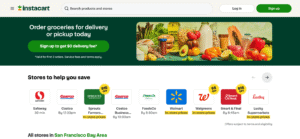
Instacart dominates grocery delivery by combining marketplace variety with flexible shopper fulfillment.
Core Strengths
Shoppers pick items in real stores
Strong integrations with major retailers
Efficient batching for large grocery orders
Real-time replacement suggestions for out-of-stock items
Instacart’s model works because it blends in-store picking with optimized last-mile fulfillment.
Deliveroo
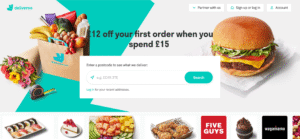
Deliveroo is known for its premium logistics performance and advanced delivery technology across Europe and Asia.
Why Deliveroo Stands Out
Rider-first operating model
Editions (cloud kitchens) for better order density
Predictive routing algorithms
Focus on fast and accurate deliveries
Deliveroo Editions created a new category of delivery-optimized kitchens that increased operational efficiency.
Verified Source:
Swiggy

Swiggy is a leading multi-category delivery app in India, covering food, grocery, and essentials.
Swiggy’s Winning Factors
Highly optimized last-mile network
Swiggy Instamart dark-store model
Strong driver engagement platform
Unified multiple delivery categories
Swiggy’s inventory-led quick commerce model offers one of the fastest delivery ETAs in the region.
Key Takeaways from Global Leaders
Operational Lessons
Use smart routing and batching to reduce delivery cost
Build merchant success tools for retention
Maintain strong driver engagement for faster fulfillment
Product Lessons
Focus on accurate ETAs and live tracking
Simplify ordering to reduce friction
Maintain transparent pricing and fees
Business Lessons
Hybrid business models scale faster
Multi-category expansion increases lifetime value
Partnerships accelerate user acquisition
Verified by ReadAuthentic Research, top delivery platforms consistently succeed because they balance logistics, user experience, and monetization without overextending resources.
Common Challenges and How to Solve Them
Delivery apps face operational, technical, and logistical complexities that can impact user satisfaction and profitability. Understanding these challenges early helps founders build a more resilient and scalable delivery ecosystem.
High Delivery Costs
Last-mile delivery is the costliest step in the logistics chain because it involves human labor, route variability, and unpredictable real-world conditions.
Why Costs Rise
Traffic delays
Long-distance deliveries
Driver unavailability
Fuel price fluctuations
Failed deliveries
How to Solve It
Enable route optimization
Use batch delivery for clustered orders
Introduce zone-based delivery fees
Incentivize drivers during peak hours
Use dark stores or micro fulfillment
Driver Shortages and Low Acceptance Rates
A delivery platform cannot run efficiently without a strong and reliable driver network.
Causes
Low payouts
Poor routing
Long wait times at merchants
Unbalanced order distribution
Solutions
Increase peak-time incentives
Improve driver navigation tools
Reduce merchant preparation delays
Use smart assignment algorithms
Better driver experience improves fulfillment accuracy and reduces delays.
Inconsistent Merchant Performance
Merchants affect order preparation speed, accuracy, and user satisfaction.
Why Issues Occur
Delayed order acceptance
Slow preparation
Poor packaging
Stock mismatches
Fixes
Provide merchant performance dashboards
Add penalty or reward frameworks
Enable real-time communication
Introduce inventory syncing tools
Consistent merchant performance reduces cancellations and bad reviews.
Order Tracking and ETA Inaccuracy
Incorrect ETAs frustrate users and increase support tickets.
Why ETAs Become Unreliable
Traffic spikes
Merchant delays
Driver detours
Outdated routing algorithms
Solutions
Use AI-based ETA prediction
Update routes dynamically
Sync merchant prep time in real time
Train drivers to follow app navigation
Better ETA accuracy significantly improves user trust.
High Cart Abandonment
Many users drop off during checkout due to friction or unclear charges.
Common Causes
Extra delivery fee
Slow app performance
Forced sign-up before browsing
Complicated address selection
Fixes
Simplify checkout flow
Show full price breakdown upfront
Enable quick login with OTP
Auto-detect location and save addresses
A smoother checkout increases completed orders instantly.
Compliance and Data Security Issues
Delivery apps manage sensitive user information, so weak security can lead to penalties and data breaches.
Risks
Weak encryption
Payment fraud
Misuse of contact details
Unauthorized access
Solutions
Use end-to-end encryption
Apply PCI DSS payment compliance
Implement role-based access
Conduct periodic security audits
This report highlights the increasing cost of breaches and the importance of security-first architecture.
Customer Support Overload
Support teams often get overwhelmed during peak hours or festival seasons.
Causes
Late deliveries
Missing items
Refund disputes
Inaccurate ETAs
Solutions
Add AI chatbots for FAQs
Display clear tracking updates
Use automated refund workflows
Add rating-based priority support
Efficient support reduces churn and improves app reviews.
Why Solving These Challenges Matters
Reduces operational cost
Improves user experience
Increases delivery success rate
Boosts platform profitability
Enables smoother multi-city expansion
Verified by ReadAuthentic Research, delivery apps that proactively address these challenges achieve higher retention, stronger merchant loyalty, and more predictable delivery performance.
-
How does an on-demand delivery app work?
A delivery app connects users, merchants, and drivers through a real-time system that manages orders, tracking, payments, and delivery routing. The app assigns drivers automatically and updates users at every step.
-
How much does it cost to build a delivery app?
A full delivery app typically costs between 30,000 USD and 200,000 USD depending on features, regions, and technology choices. MVP versions cost less because they include only essential modules.
-
What features are required in a delivery app?
Core features include user authentication, search, ordering, payments, tracking, driver app tools, merchant dashboards, and an admin system. Advanced features include AI routing, smart assignment, and dynamic pricing.
-
How long does it take to develop a delivery app?
Most delivery apps take 4 to 9 months depending on feature complexity and the number of modules. A focused MVP can launch in about 3 to 4 months.
-
Which technology stack is best for a delivery app?
Popular choices include React Native or Flutter for mobile and Node.js, Laravel, or Django for backend systems. PostgreSQL, MongoDB, and Redis are commonly used databases for speed and reliability.
-
How do delivery apps assign drivers?
Apps use algorithms that evaluate distance, traffic, driver availability, ratings, and preparation time. The best driver is assigned automatically to reduce wait time and improve delivery accuracy.
-
Why is last-mile delivery expensive?
Last-mile requires human labor, real-time routing, and multiple stops. Traffic issues, fuel cost, and failed deliveries increase the total cost of fulfillment.
-
How do delivery apps make money?
Delivery apps earn through commissions, delivery fees, subscriptions, surge pricing, merchant promotions, advertising, and white-label licensing. Most successful platforms use hybrid monetization.
-
How can AI improve a delivery app?
AI boosts performance through smart driver assignment, route optimization, demand prediction, dynamic pricing, ETA accuracy, chatbots, and personalized recommendations.
-
How do you ensure data security in a delivery app?
Data encryption, tokenization, PCI compliant payments, strict access control, and regular audits keep user data safe. Verification steps help prevent fraud and misuse.
-
What causes delivery delays?
Common causes include traffic, merchant preparation delays, low driver availability, inaccurate ETAs, and routing issues. Optimizing dispatch and improving tracking reduce delays.
-
How do delivery apps reduce cart abandonment?
Simplified checkout, transparent pricing, saved addresses, fast loading screens, and OTP login help users complete orders without friction.
-
Is it possible to scale a delivery app across multiple cities?
Yes. Strong logistics, automated dispatching, accurate ETAs, and region-wise driver onboarding enable predictable multi-city scaling.
-
What is the most important factor for delivery app success?
Reliable last-mile performance. Users care most about accurate ETAs, live tracking, and consistent delivery speed. Operational stability drives retention more than any feature.
Research and Written by Read Authentic Team
Edited By: Read Authentic & Team
Expert Reviewed By: Alpesh Nakrani
Fact Checked By: Zubair Pateljiwala
Copy Edited By: Nayan Mistry


